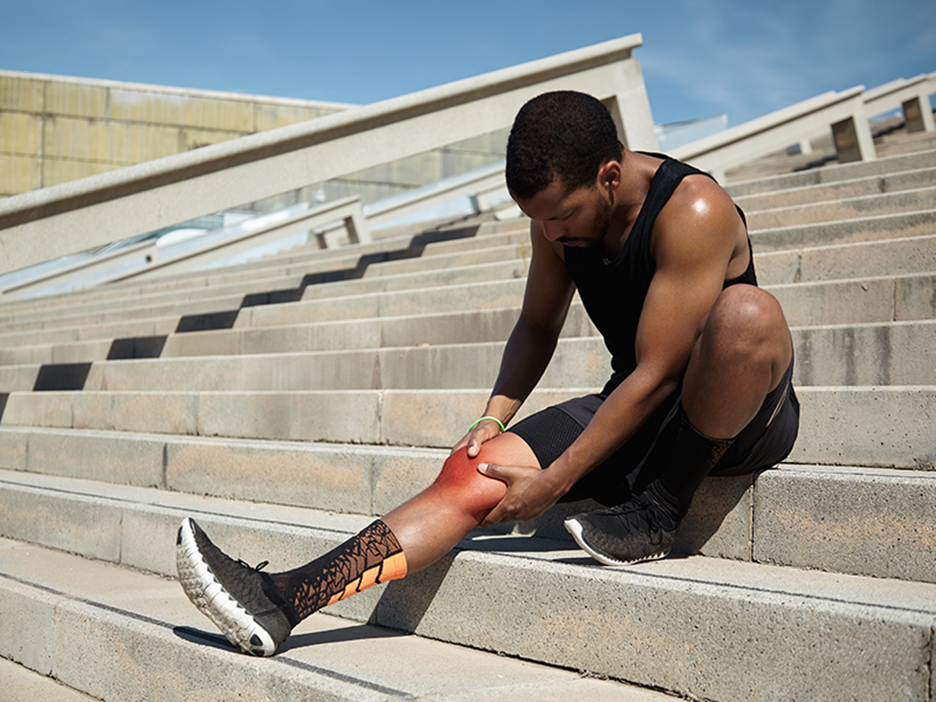Search
Find a Physician
Robert A. DeFalco, Jr., DO
Medically Reviewed by
Stephen Koss, MDBlog
Jun 12, 2024
OINJ PHYSICIAN’S ADVICE
When an athlete sustains an ACL tear, it can feel like their life is over, and they may never play their sport again. Thanks to advancements in the field of sports medicine, this couldn’t be further from the truth. Following ACL reconstruction or repair, with dedicated postoperative rehab, patients can return to the sports they love with full confidence in their knee.
Ashley Bassett, MD
Orthopedic Surgeon
So, whenever your favorite player is out of the game for a while, chances are it could be due to an ACL tear. Your knee is held together by four ligaments, one on either side and two within the joint itself. A rupture of any of these four ligaments is serious, but today, we will focus on the most famous of the ligaments, the Anterior Cruciate Ligament. Here’s what you need to know about torn ACL treatment, as well as both surgical and non-surgical options that you have at your disposal.
Your ACL is one of the four main ligaments in the knee, and it connects the femur (thigh bone) to the tibia (shin bone). The other three ligaments are:
Unlike PCL (in the back side of the knee, but inside the knee joint), MCL (on the inner side of the knee, but outside of the joint), and LCL (on the outer side of the knee, and outside of the joint), the anterior cruciate ligament (ACL) is located in the middle of the knee joint, in the front.
Its main role is to provide stability to your knee during the rotational movements and prevent the shin bone from sliding out in front of the thigh bone.
The biggest problem with the ACL lies in self-diagnosis. Initially, your knee hurts after an injury, and it may feel like you can pinpoint the location; however, it is not advised to diagnose with symptoms alone.
Most commonly, you’ll feel the pain on the outside and back of the knee. In the first hours after the injury, you’ll experience some swelling. Movement will be limited, and you’ll lose a lot of your range of motion. You’ll also feel a lot of discomfort when walking.
No matter how confident you feel about your symptoms, only a doctor can confirm whether it's truly an ACL tear or not. They’ll do a preliminary examination, send you for an MRI, and even use an ultrasound to visualize internal structures. Only then will you get a reliable diagnosis. Still, as soon as you have probable cause, you should head straight to your physician.
The ACL tear is one of the most common sports injuries out there. If you watch sports long enough, your favorite player will likely have experienced it. In fact, it happened to:
While sports such as football, basketball, soccer, and rugby are considered the most dangerous for ACL injuries (excluding combat sports), the risk is still present in golf. After all, even Tiger Woods suffered from a torn ACL.
The injury can happen when your foot is firmly planted and a sudden force hits your knee. It can also happen with a sudden change in direction or an improper landing where the foot is firmly planted, and then the body rotates suddenly.
The non-surgical torn ACL treatment options are quite numerous and if the injury is not that serious (a partial tear), they could be quite effective.
RICE (rest, ice, compression, and elevation) is usually quite effective, especially immediately after the injury. Keeping the weight off the injured knee is a priority, and crutches are the most effective way to do so.
The initial stage of the treatment also involves pain management with the use of over-the-counter medication.
In some scenarios, a doctor may perform joint aspiration to reduce swelling and improve range of motion.
Still, the most effective non-surgical ACL treatment is physical therapy.
The most common surgery for a torn ACL is the ACL reconstruction. Then again, some alternatives to ACL reconstruction have advanced quite a bit. For instance, techniques like bridge-enhanced ACL repair (BEAR), are giving some incredible results..
Once the doctor determines which surgery is best for the torn ACL, you’ll have to undergo a standard surgical procedure.
This includes general or regional anesthesia (spinal or epidural) so that you’re not in pain during the procedure.
Today, this procedure can be done arthroscopically, which means that the surgeon will make a small incision and use an arthroscope (a camera on a thin tube) to allow them to see inside the injury without making a major incision.
The surgeon then takes a tendon graft from either the patient’s body (this is called autograft) or from a donor, a cadaver (this is called allograft). Most commonly, an autograft is used and it is taken from either patellar, hamstring, or quadriceps tendon.
After the torn ACL is removed, and the old ligament is replaced with a new graft. The surgeon secures the graft by drilling small tunnels in the femur and tibia. The graft is secured in place with screws or other fixation devices, and the incision is closed.
The surgery usually lasts between one and a half and two hours. Still, this depends on the specifics of the procedure and the surgeon's experience.
Most patients go home on the same day.
Just keep in mind that ACL will usually not heal on its own. This means that if non-surgical treatments fail or if the tear is too serious, you won’t be able to solve the problem without surgery. Regardless of whether it’s ACL or an experimental new implant method, you’ll need to undergo a surgical procedure to heal.
Post-surgery recovery takes place in stages, and it’s a key part of torn ACL treatment. How quickly and well you heal usually depends on your adherence to rehabilitation (among other factors, like your genetics and the severity of the injury).
During the first two weeks, you’ll use crutches and a knee brace. Then, there’s the physical therapy stage, where you’ll start doing exercises that are supposed to return mobility. During these first weeks, you’ll be going very light.
Once you’re a bit better (usually after three to six weeks), you can gradually return to weight-bearing activities. This is the stage during which you prioritize strengthening your quadriceps and hamstring.
During the first three to six months, you’ll engage in more intensive physical therapy to regain full strength, balance, and proprioception.
Ideally, you could return to sport within six to 12 months.
After you’re done, you need to do your best not to allow this injury to happen again. Therefore, in addition to regular physical therapy exercises, it's essential to incorporate ACL injury prevention exercises. Introduce these into your regular routine, and you’ll minimize the risk of a future injury
Torn ACL treatment is incredibly effective. Sure, this is a common injury that many people suffer from, and yes, it’s a serious injury. Still, many people successfully recover from it and go on to achieve some of the greatest feats in their careers. As long as you take it seriously and trust your doctor, your chances of recovery should be pretty great.
To learn more about this issue, find an expert in torn ACL treatment at the Orthopedic Institute of NJ.
This article was reviewed and approved by an orthopedic surgeon as we place a high premium on accuracy for our patients and potential patients.Robert A. DeFalco, Jr., DO



